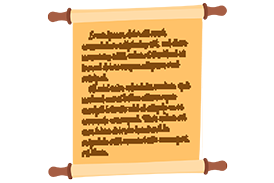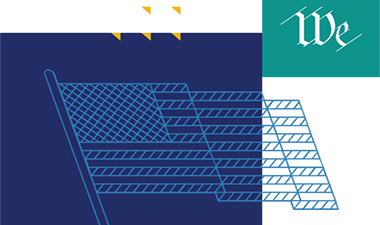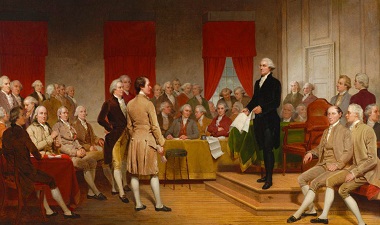
Getting Started
This module includes an Unboxing the Constitution video (5 min), Inside the Constitution video (6 min), student activities, and a learning project. Download the Teachers Guide and the Student Content Guide for more details on content and implementation. Course materials are provided in Google documents, Word documents, as well as printable PDFs.
A preview of the module can be accessed below.
Topics covered include:
- Exploring the Constitution
- Methods of Constitutional Interpretation
- Constitutional Conversations
- Defining Civil Dialogue

Vocabulary
At the beginning of each module, students are presented with vocabulary words and definitions.
Concept Words
Concept words are conceptually related to the big ideas in what they’re learning. These connect directly to the core concepts or themes of the lesson or unit and help students grasp the main ideas and how everything fits together.
- Articles: Separate sections of a document (for example, parts of the Constitution).
- Civil: Polite and respectful.
- Branches of Government: The separation of the government into three parts (legislative, executive, and judicial) whose powers are outlined and defined in the Constitution.
- Democracy: A government in which citizens hold the ultimate power.
- Political: Concepts that relate to the government or the conduct of government.
- Precedent: An earlier occurrence of something (for example, an earlier court decision).
- Prudence: Taking consequences into account when making judgments.
- Tradition: A pattern of thoughts, action, or behavior that is passed down.

Topic 1: Thinking Like a Judge
Thinking like a judge means learning about different ways that people interpret or understand the meaning of the Constitution. What is the difference between a political question and a constitutional question? Why is civil dialogue important for American democracy? The answers to these key questions are reflected in the foundation that underpins the Founders’ vision for America that is outlined in the Constitution.
1.1: Activate Prior Knowledge
Students will complete a KWL chart to identify what they know and what they want to know about the Constitution.
Unboxing the Constitution, Video 1
In this Unboxing the Constitution video, Lucy dives into civil dialogue and its importance in our world today.
1.2: Explore the Constitution
Students will read the Preamble to the Constitution, and summarize it with their own words and ideas.
1.3: Constitutional Conversations
What are the methods that lawyers use to interpret the Constitution? Students will explore the several methods of constitutional interpretation in this activity to learn more about the ways in which people have engaged with the documents throughout history.
Support deeper learning by leading a class discussion about the type of interpretation that resonates the most with students. Want more ideas about further engagement? Explore the Teachers Guide for Module 1.
1.4: Closing Activity
Students will check in on the Key Question(s).

Topic 2: The Importance of Civil Dialogue
The Founders envisioned a government system that was guided by thoughtful reflection and conversation, the use of logic and reason, compromise, and a commitment to the public good. This means participating in Constitutional Conversations, and that requires civil dialogue.
1.5: Defining Civil Dialogue
What does civil dialogue mean? What does it look like, sound like, and feel like? Students will explore definitions that already exist and take some time to develop new ones.
Watch the Inside the Constitution video to learn even more about norms and the importance of dialogue.
Inside the Constitution
1.6: Civic Connection: Successful Constitutional Conversations
In this Civic Connection activity, students will have the opportunity to participate in a civil dialogue! Use the norms from class, discuss constitutional questions (instead of political ones) and actively listen to classmates and peers. Think about questions like:
- Can a teacher decide to give homework to only certain students?
- Can a principal add an extra school day to the end of the year?
1.7: Reflect
To close out this module, students will revisit the KWL handout and the key questions from the beginning of the module to see how insights have grown throughout the lesson.

Learning Project: Visual Voices: Designing Civil Dialogue
In this activity, students will design their own infographics to share information about civil dialogue. Infographics are visual design tools used to display data and information on a topic. Students will practice using different design elements to create an effective infographic on civil discourse that will help an audience understand more about civil discourse.












